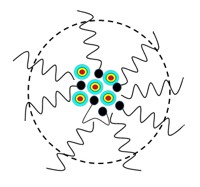Advertisement
Grab your lab coat. Let's get started
Welcome!
Welcome!
Create an account below to get 6 C&EN articles per month, receive newsletters and more - all free.
It seems this is your first time logging in online. Please enter the following information to continue.
As an ACS member you automatically get access to this site. All we need is few more details to create your reading experience.
Not you? Sign in with a different account.
Not you? Sign in with a different account.
ERROR 1
ERROR 1
ERROR 2
ERROR 2
ERROR 2
ERROR 2
ERROR 2
Password and Confirm password must match.
If you have an ACS member number, please enter it here so we can link this account to your membership. (optional)
ERROR 2
ACS values your privacy. By submitting your information, you are gaining access to C&EN and subscribing to our weekly newsletter. We use the information you provide to make your reading experience better, and we will never sell your data to third party members.
Materials
Quantum Dots Linger In Mouse Tissue
Fluorescence imaging reveals that the flashing nanoparticles can persist for years in mice, although the long-term toxicity is still uncertain
by Aaron A. Rowe
June 22, 2009
| A version of this story appeared in
Volume 87, Issue 25

Quantum dots could become fantastic contrast agents for medical imaging, but the glittering nanoparticles typically are made from toxic metals, and researchers don't know how long they remain in the body or whether they gradually dissolve. To shed light on those questions, Marcel P. Bruchez and colleagues of Carnegie Mellon University injected ZnS-coated CdSe quantum dots into mice and examined them with fluorescence imaging techniques (Nano Lett., DOI: 10.1021/nl901534q). Within days, the dots were undetectable in liver tissue, but they remained in bone marrow for months. Two years later, new images disclosed that some quantum dots still lingered in the animals' lymph nodes. The nanoparticles' emission spectra changed considerably, however, raising the possibility that they partially dissolved. The researchers conclude that quantum dots don't spill their metal contents quickly enough to pose an acute health risk, but it is unclear if the nanoparticles might cause chronic metal toxicity. They argue that quantum dots should be engineered to exit the body rapidly and should not be made from toxic metals, even if they have a sturdy shell.




Join the conversation
Contact the reporter
Submit a Letter to the Editor for publication
Engage with us on Twitter